Trolley Problems
Build Series, #2
This is a second in what popular demand has dictated will be an ongoing series where I build things to solve problems. You can read the first installment here. This is an image-heavy post and exceeds the capacity of certain email providers. To get the full effect, read this post on the web at http://jdanielsawyer.substack.com
Carving civilization from the wilderness is not all glitz and glamour (shocking, I know). It’s an endeavor filled with reverses, problem solving, challenges, and lots and lots of adaptation. Feast and famine rule the day—sometimes, you can go months without noticing any change in the state of the site while you scrimp for cash and stockpile materials. Then, in a brief flurry of activity, the physical world changes around you. In this sense, it has a lot in common with the other consistent theme in my life: freelancing.
As you may have gathered, I live in the middle of nowhere, and I’m attempting to do the near-impossible: build a home and a small retreat center on next-to-zero budget, with my wits and my muscles.
The Shed Door From Hell
Last year, I put up the first storage shed on the site—essential for managing stockpiles of food and books and other essential supplies that are cheaper to buy in bulk than they are to buy as-needed—but I didn’t put a door on it.
Doors are expensive. Doors are a pain. And, in this case, I wanted a sliding door, which requires expensive hardware I couldn’t afford. A good opportunity to do some practical engineering—I just had to figure a good design.
I have a pile of inch-and-a-quarter square tube hanging around, and I spent way too long thinking about how I might weld them together to make a single piece long enough to hang a 10 foot wide rolling door (i.e. 20ft), and then using the plasma cutter to put a channel in the bottom from which I could hang the rollers, but I kept running into problems. For example:
Welding invariably warps steel, so how do I keep the track straight?
How do I clean out the inside of the welds so that the rollers—however I wound up making them—could actually roll well?
How do I secure hangers to the track without doing more welding and warping?
The more I worked on the design, the less I liked it. I was starting to think I might have to give up and take a trip to the big city to buy some virgin steel stock—which I didn’t want to do because it would feel like “giving up,” and also because it would injure my wallet.
Then, on one of my several-times-a-day thinking hikes, I literally tripped over my solution.
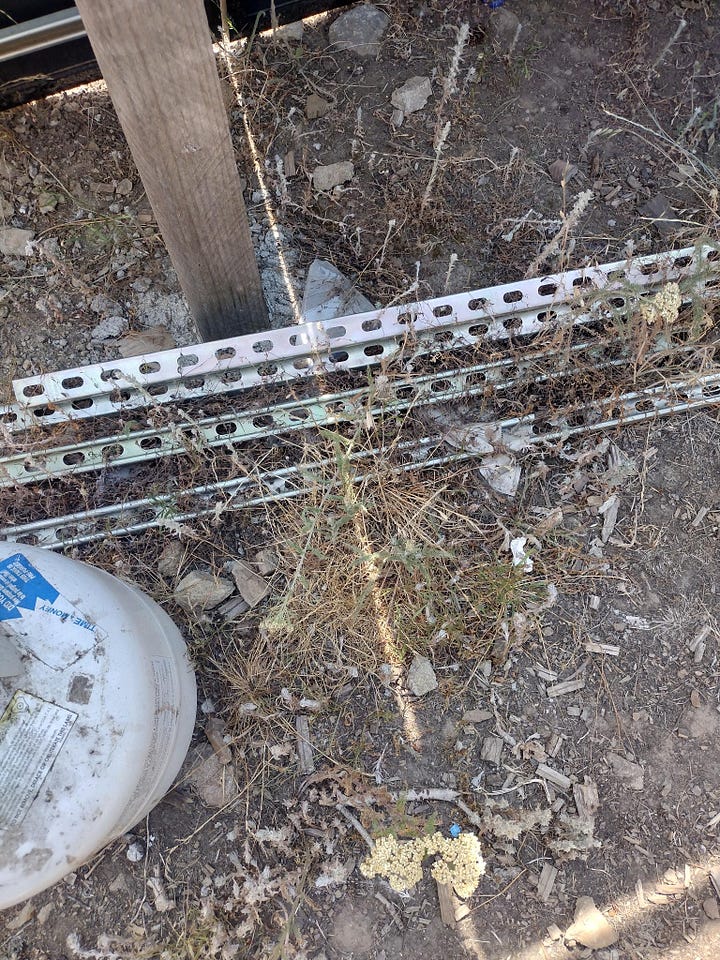

This is called “Unistrut.” It’s basically tinker-toys for adults. I had a bunch of it lying around because I use it for racking my solar panels—and, importantly, I had some of the wrong size laying around due to a mistake at Home Depot which I didn’t notice until I was all the way home. On the principle of “Oh well, it’ll come in handy someday” I opted not to bother with the stupidly-long drive back to a town big enough to house a big-box store.
Well, come in handy they did. These pieces, which were larger-than-suitable for solar panel racking, are perfect for gantry tracks—or, in my case, door tracks:
It’s already got a reinforced lip that bearings can ride on
It’s already got holes in the top which will let me secure brackets to—so I can bracket multiple pieces together and hang it well from the wall without welding it.
It is already hot-dip galvanized, so I wouldn’t have to worry about painting it to protect it against rust.
I already owned it.
So, now I knew what I was going to use for my tracks, I had that most quintessential of internet issues: A Trolley Problem.
Unistrut, being a modular platform, has trolleys for sale that fit this size of channel, but those trolleys aren’t cheap—they run between $15 and $30 a piece, depending on the style.
Smart money would be to just choke down and buy the manufactured trolleys, but the week I tripped over the Unistrut the family got hit by a one-two downsizing punch, so our finances are officially in “famine” mode for the foreseeable future.
Speaking of which, my partner and I are currently seeking gigs for editorial, layout/design, voice over, audiobook narration, and strategic consulting work. Additionally, if you’re looking for a tutor for a student struggling with history, English, creative writing, or psychology, I’m available for hire.
Or you can help out substantially by joining me here as a paid subscriber.
The Wilderness Gets a Vote
Time, also, was not on my side. As luck would have it, I learned from my neighbor that the bear has just learned that freezers (such as the one that lives in our shed) contain food. If I don’t want to lose the frozen part of our supply stockpile—which is part of how a freelancer rides out the feast-and-famine cycle—I needed to put a door on that building, and I needed to do it soon.
So it was off to the shop to build a pair of trolleys.
So here’s the shape of the problem: I needed to hang this…
From this
using this
Easy enough.
The Build
Digging through the scrap pile I got lucky on the materials. A u-bracket salvaged from an old riding mower was more than long enough to cut in half and flatten in the forge to make the chassis of the trolley.

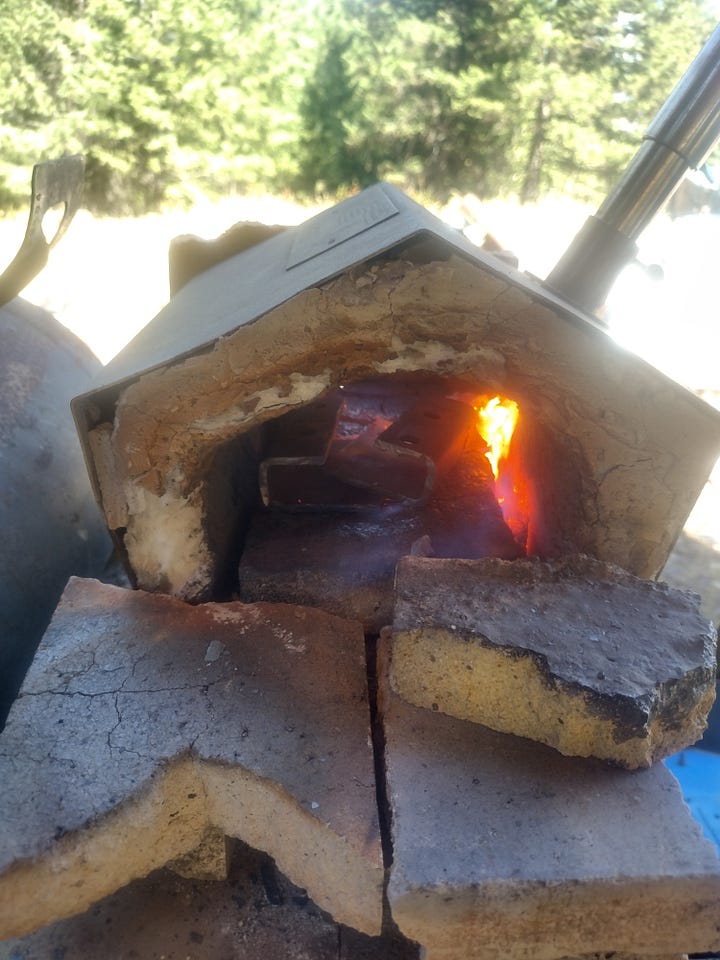
The trick was finding some pin stock for the axles.
Sealed bearings, such as the ones I had in a drawer, work best when they’re press-fit1 onto an axle that is exactly the right size. You can weld them on, but you risk cooking off the grease in the sealed bearings (and warping everything). I looked high and low for a bolt that would fit properly, but everything I had was either just too big, or just too small.
For those of you who are new to this kind of thing, that little round thing is a sealed bearing, about the same size as you find in a roller-blade wheel. It consists of two cylindrical surfaces (the races) separated by a ring of little balls (ball bearings), and lubricated with grease. Using bearings takes the friction out of sliding one thing against another, allowing you to turn linear motion into circular motion. Every wheel you’ve ever run into, aside from maybe those on your childhood toys, has bearings in it. They’re called “bearings” because they bear the load.
Eventually, I did come up with a piece from an old frost-free fire hydrant that was almost the right size. It came out as about ten thousandths of an inch too big to press-fit into the bearing, and it was bent all to hell besides.
Un-bending it was no problem. I warmed up the forge, got the metal hot, and straightened it out with a few gentle taps from my home-made wood hammer. Thinning it down while keeping it round enough to press-fit into the bearing, though, was another matter entirely.
This kind of operation is called “machining” because it’s usually done on a machine tool called a lathe. A normal well-resourced craftsman would clamp the bar into the lathe, let the lathe spin it rapidly, and attack it with a cutting tool until it was the right diameter. Here’s a short video of this kind of operation:
That operation is called “turning,” and I definitely needed to turn this stock if I wanted to avoid having to go to the store to buy something of the appropriate diameter (a half-hour drive if the nearest store had what I needed). I needed to find some way to spin the thing while also cutting or otherwise removing material from it.
I don’t have a lathe, because I don’t have a building yet that can protect one from the weather, but I do have a drill press and sandpaper. Press-fitting a bearing is not a precision operation—you only need accuracy within a few hundredths of an inch, not a few ten-thousandths. A drill press and sandpaper would do the trick. After a little bit of work on the drill press, I had four axles that would fit perfectly.

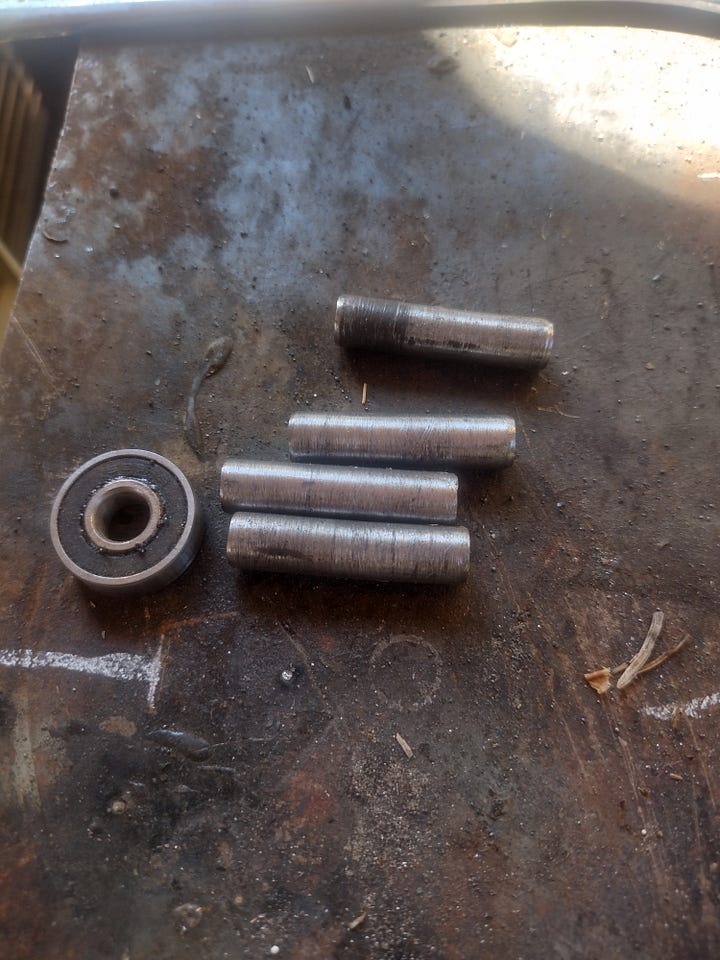
Once I had my axles, I needed to put the trolleys together. I realized that , since those trolleys will be bearing a 100lb+ load, a wise engineer would give them a little more support than just the basic bent steel. I cut a couple triangular braces from scrap flat-bar (salvaged from a shipping crate) and used them as gussets. After the test fit-up, I went ahead and welded everything together, used the dremel to de-burr everything, and painted the finished trolley frame.
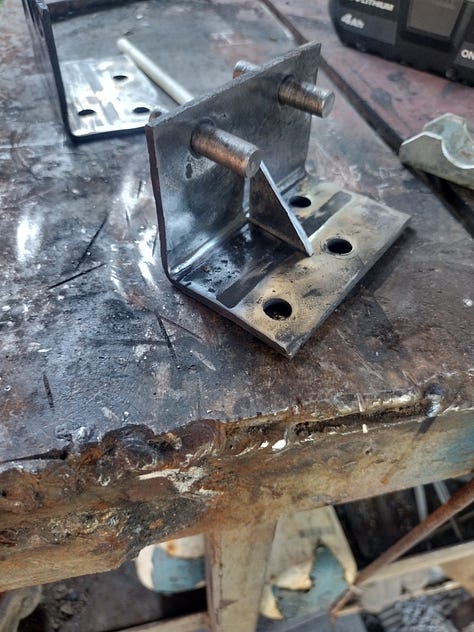
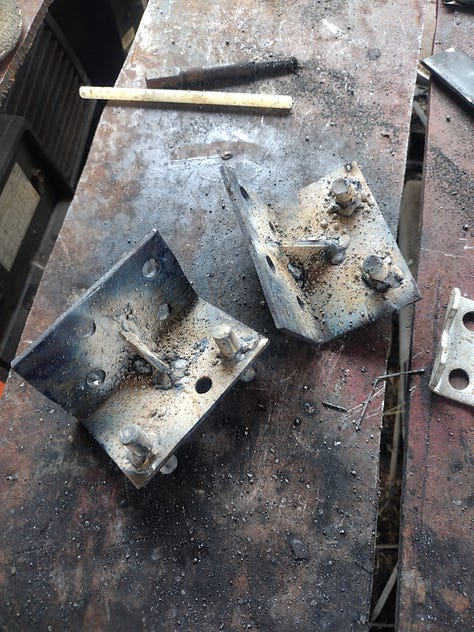
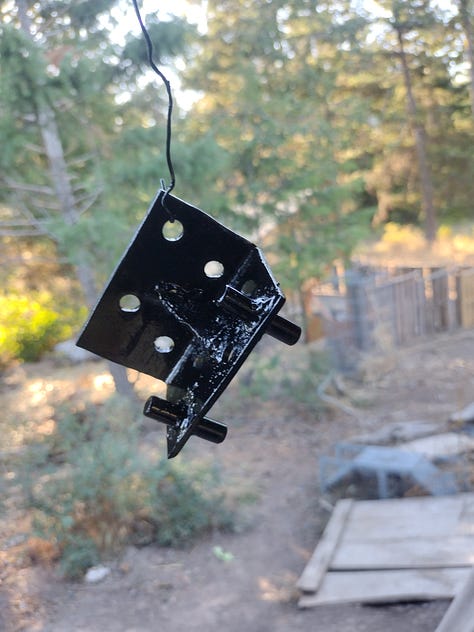
Now, the moment of truth: Press-fitting the bearings into place.
Normally, you do this kind of operation with a shop press, which looks something like this:
But I don’t have one of those—they take up space, and I don’t do a lot of bearing-pressing, so I haven’t needed one yet.
I do, however, have a vise. It won’t give me as much pressure as a 40-ton hydraulic press, but a vise (or a clamp, for that matter), is just a screw press laid on its side.
Therefore, my bench top vise (which I salvaged from an estate garbage pile and restored a couple years ago) became my bearing press. The bearings popped right on—though I did have to sand off the paint, as it added too much girth to let me press the bearings on.
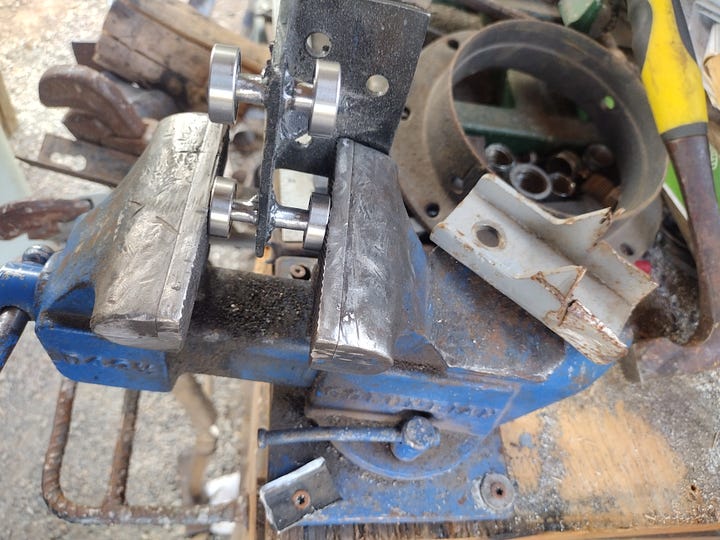
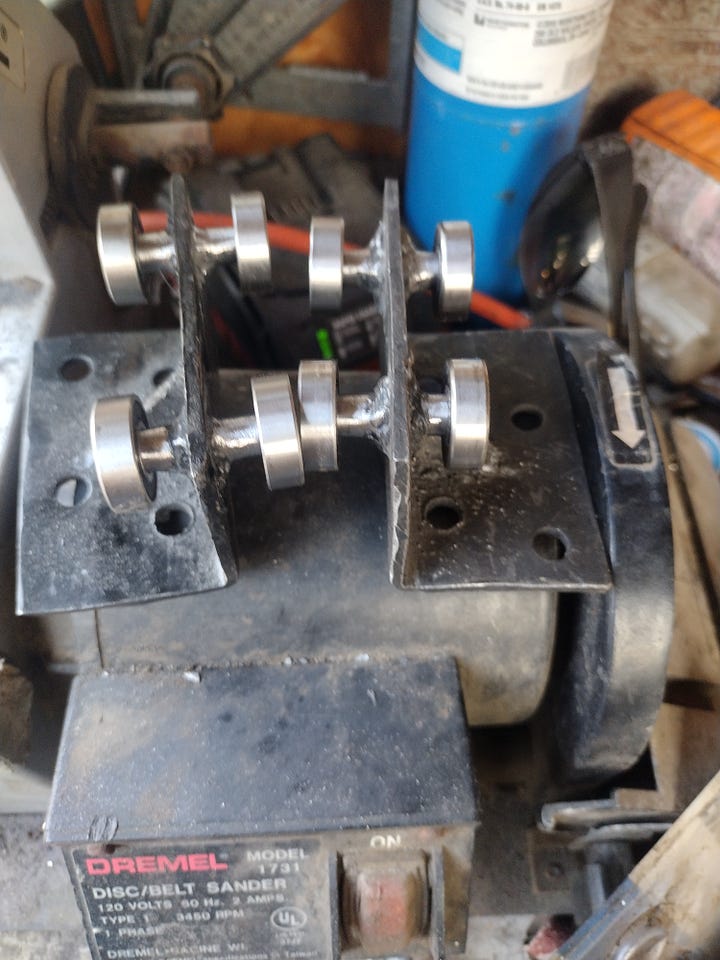
The result of all this bush-fix engineering? A pair of trolleys that ride handsomely inside the Unistrut.
Eventually I’ll show you the build process for the brackets, and the final door hang.
If you’re looking for fresh stories, you can find my novels, short stories, visions, and dreams (along with some how-to books and literary studies) by clicking here.
If you enjoyed this post, you may also want to check out my Unfolding the World series, a history of the current geopolitical storm rocking our world, its roots, and its possible outcomes.
When not haunting your Substack client, I write novels, literary studies, and how-to books. If you’re feeling adventurous click here to find a ridiculous number of fiction and nonfiction podcasts for which I will eventually have to accept responsibility.
This column is a big part of how I make my living, and I’m offering a 20% discount off the annual subscription rate. If you’re finding these articles valuable, please kick some cash into the offering plate!
Press-fitting, as the name implies, happens when you use high pressures to drive one thing onto another thing. Friction then holds the assembly together. Press-fitting only works when the inner diameter of the outer piece (in my case, a bearing) and the inner piece (in my case, the axle) are more-or-less identical. If the outer piece can slide onto the inner piece with just hand pressure, the fit is too loose.


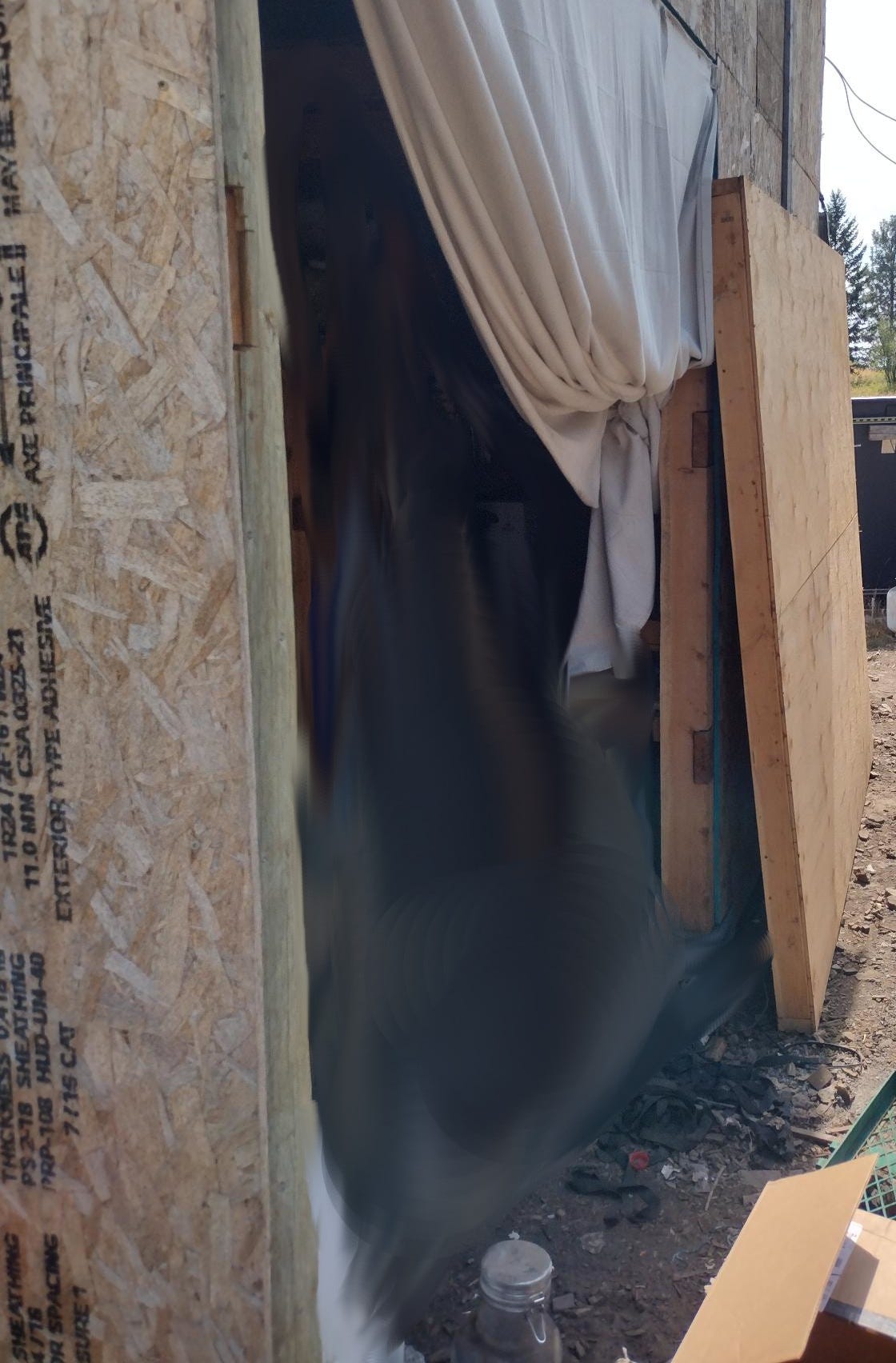

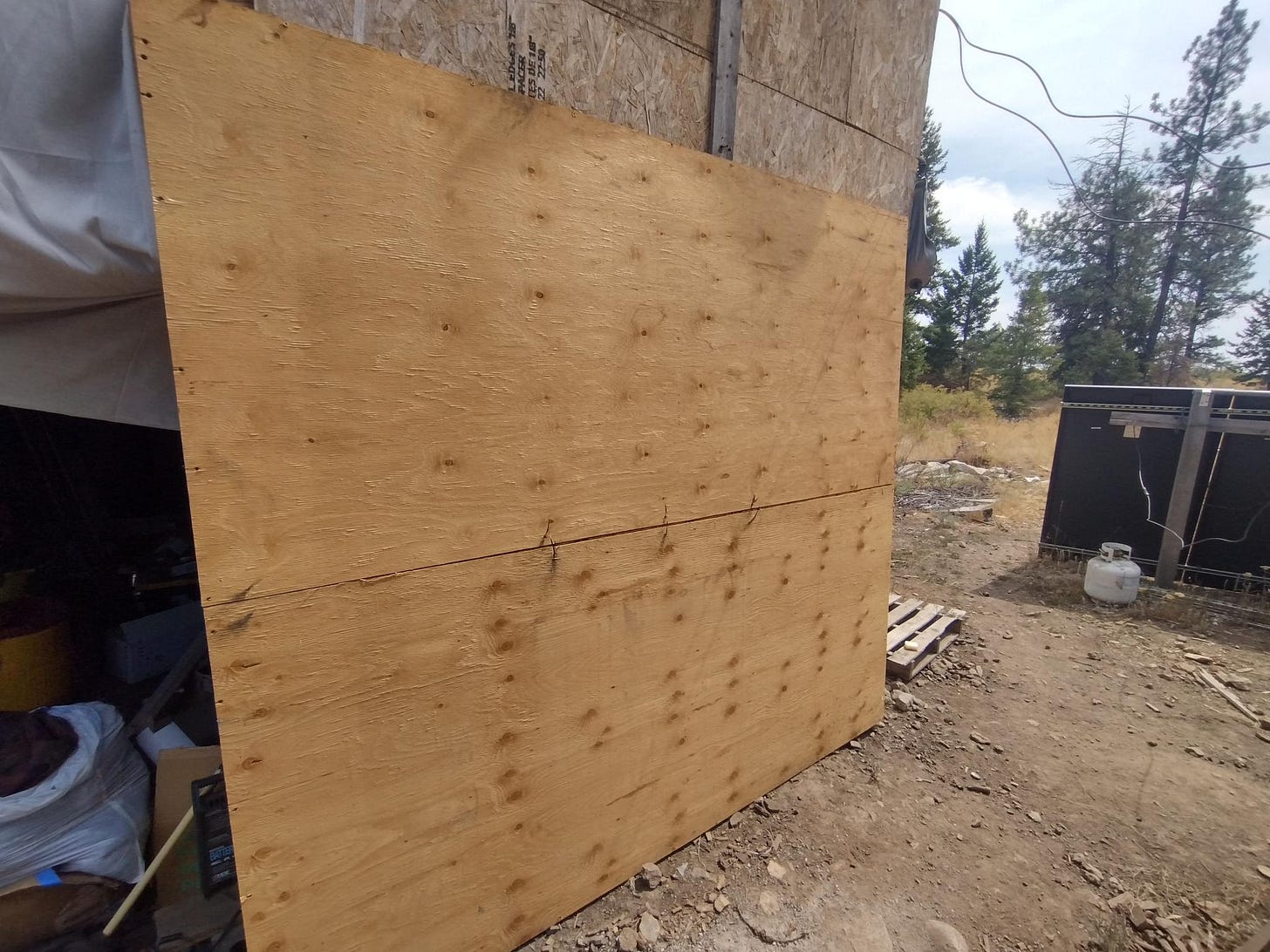
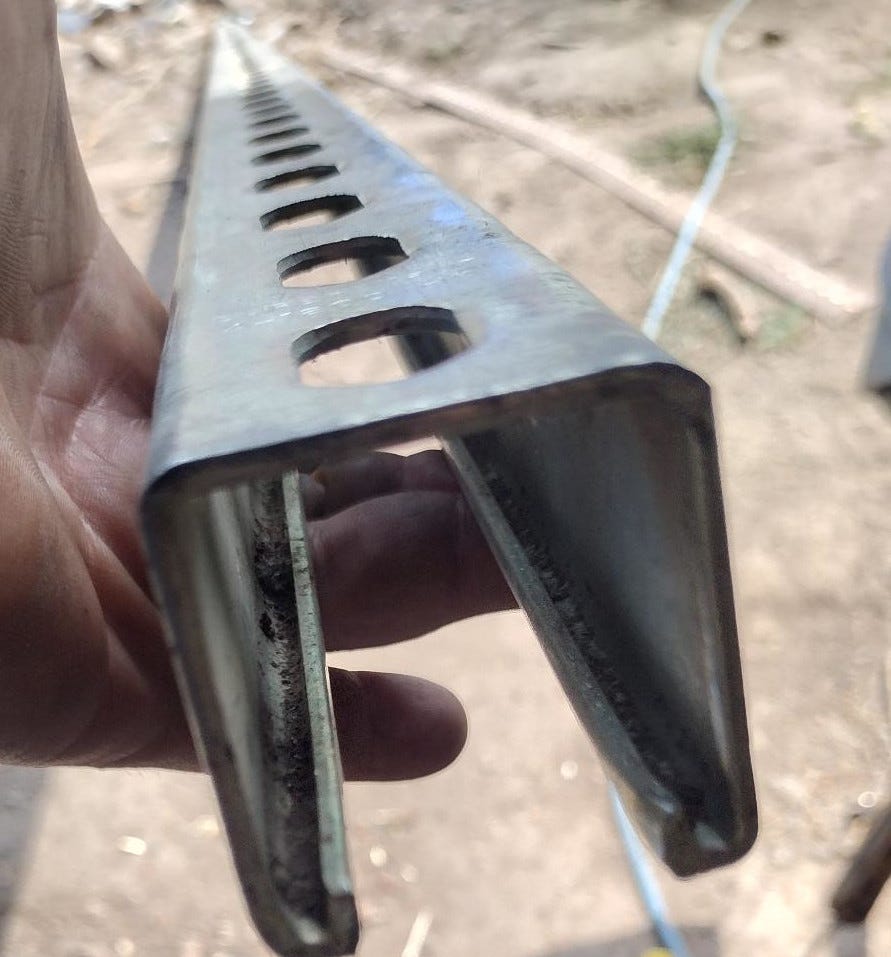
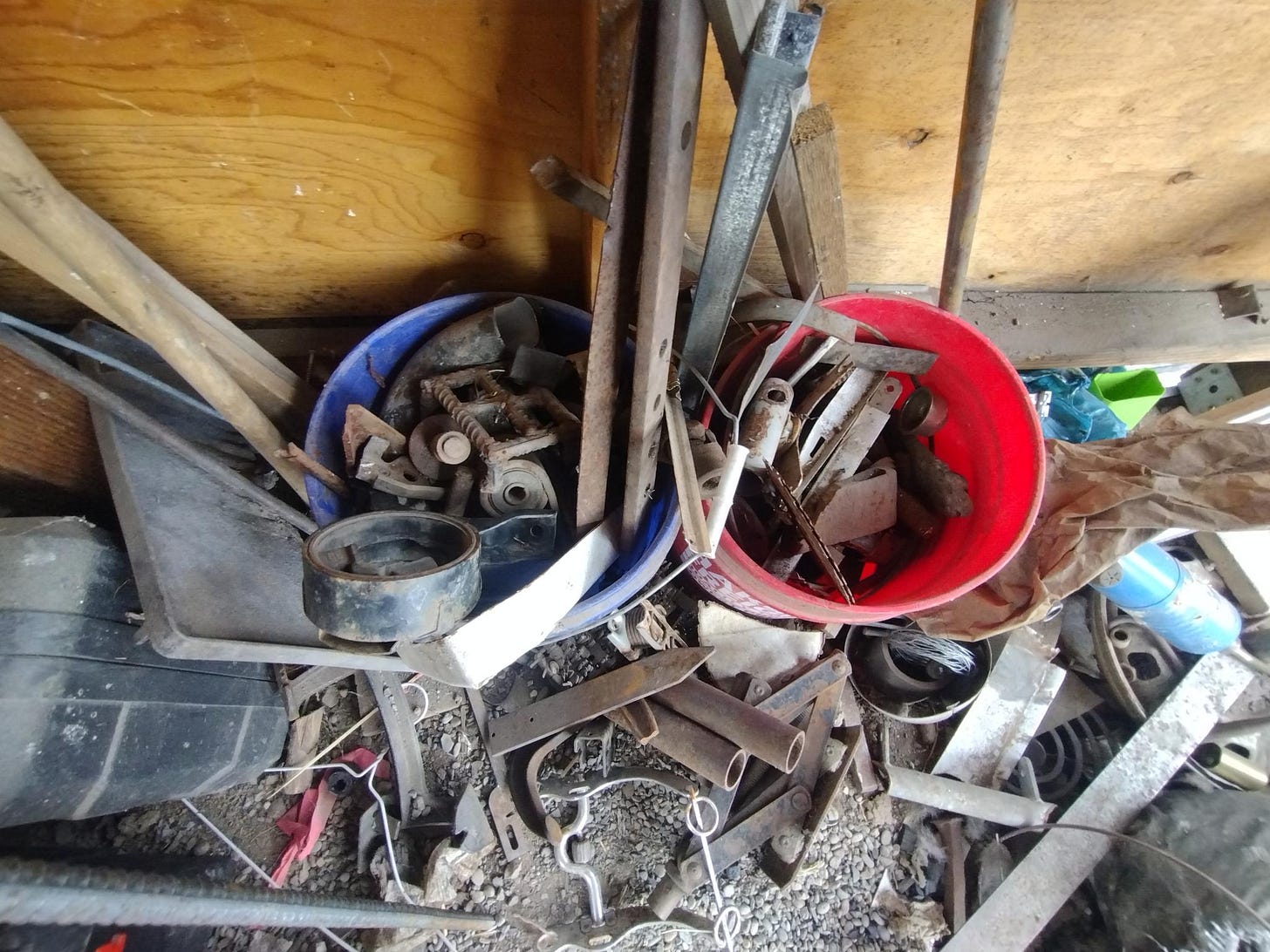




Nice work, JD. Roller blade bearings are a treasure!
So a little more than door knockers huh? 😂